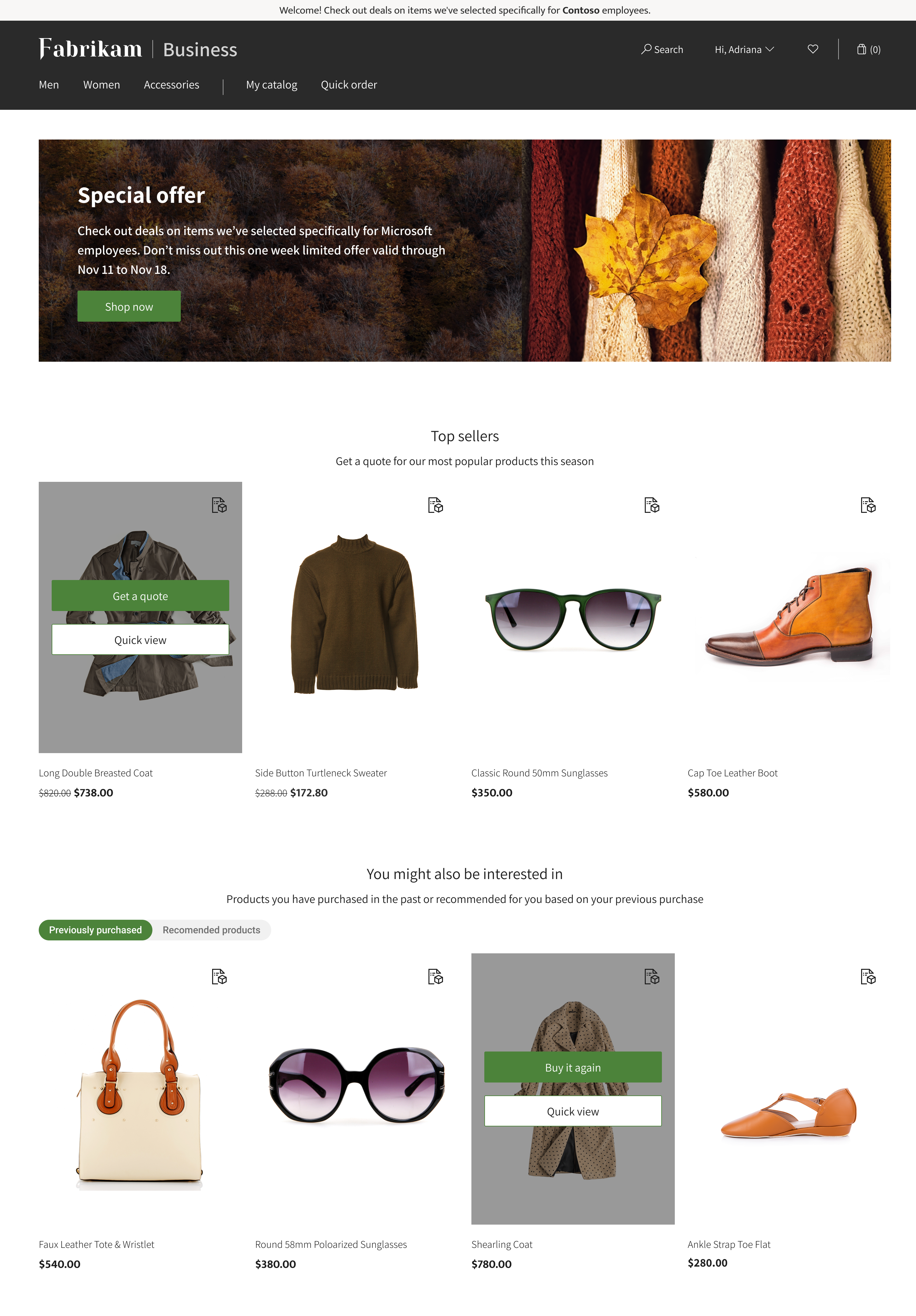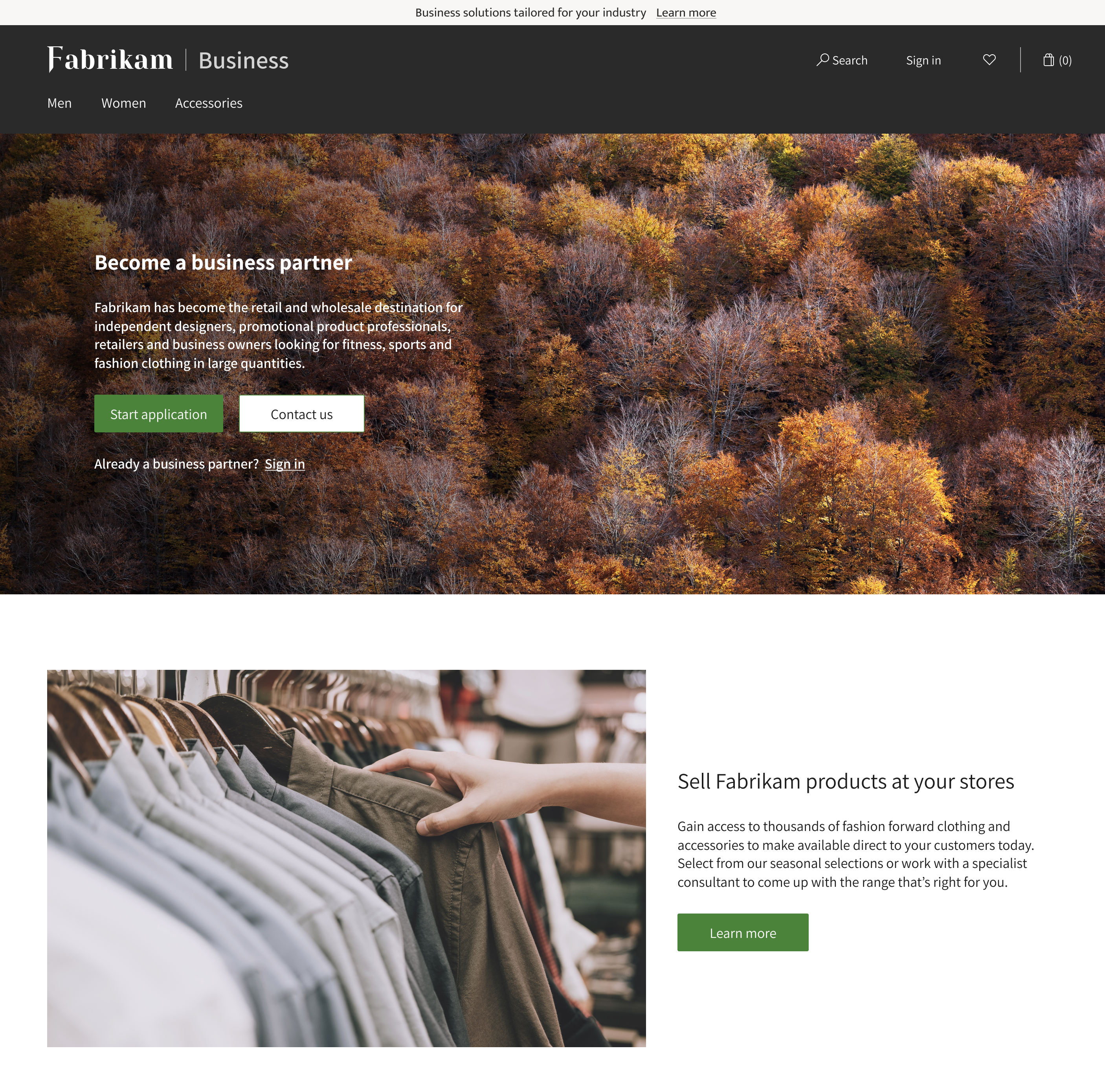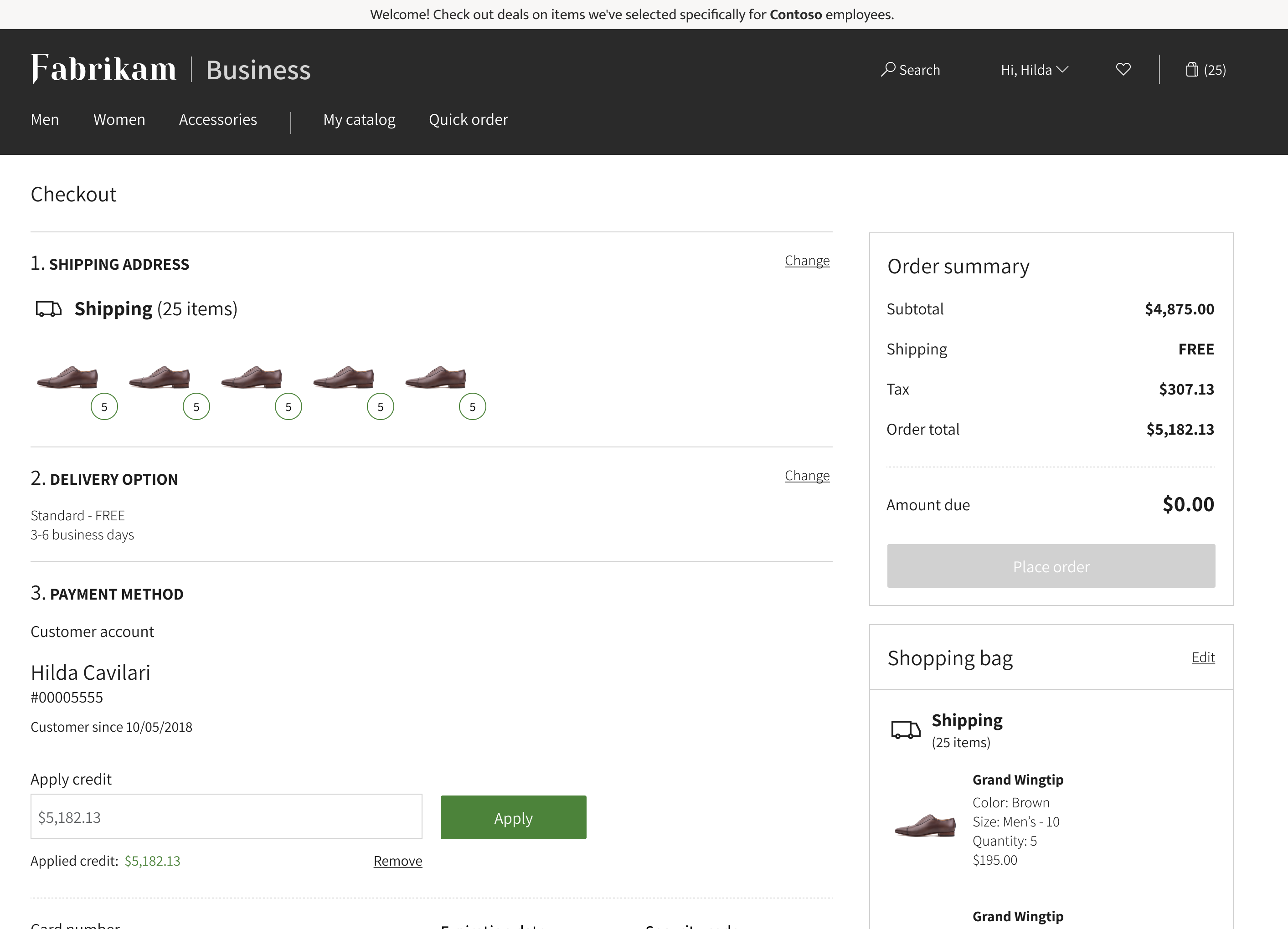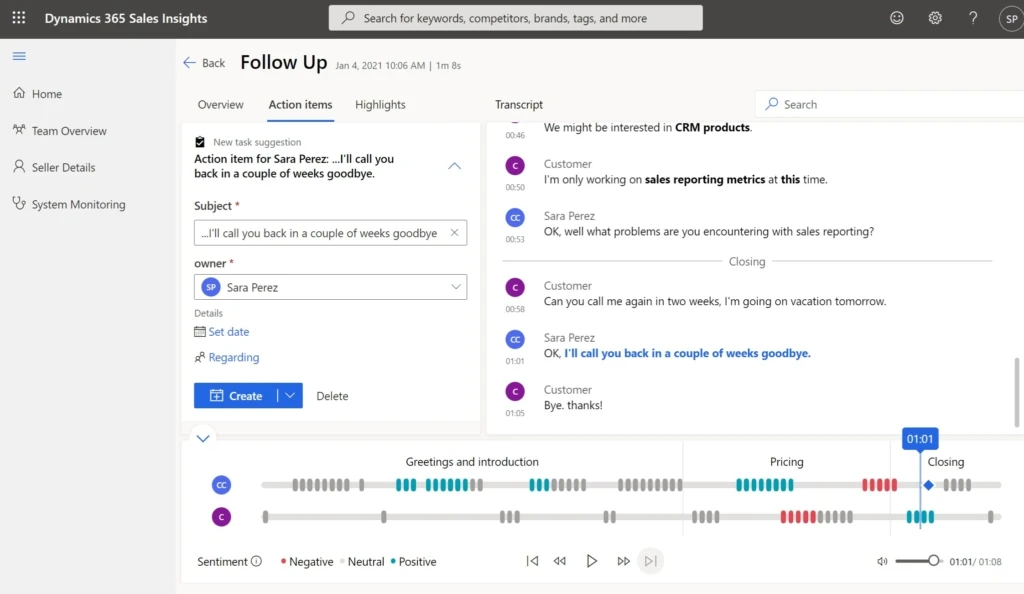
Enable a new level of B2B digital sales excellence with Dynamics 365 Commerce
This article is contributed. See the original author and article here.
Truly engaged, always connected
At this year’s NRF, many retailers are taking the time to reflect on the learnings from 2020 and the road ahead for 2021. It’s hard to believe that only 12 months have passed since we disclosed the general availability of Microsoft Dynamics 365 Commerce, which was the evolution of our proven Microsoft Dynamics 365 Retail offering, that expanded our capabilities beyond physical stores and call centers to digital commerce that enables retailers and consumer-facing businesses to meet customer demands on their terms. A recent study by Forrester commissioned by Microsoft revealed that 83 percent of retail and CPG decision makers agree that delivering a connected and unified experience to customers is vital to business success and that the key to creating those experiences lies with digital commerce.
To further enable organizations to expand their digital commerce experiences, this year we are announcing the preview of B2B e-commerce capabilities for Dynamics 365 Commerce. By bringing together B2C and B2B e-commerce capabilities onto a single unified retail and commerce platform, companies can enable feature rich and user-friendly experiences for both consumer and business customers. Built natively on an intelligent and connected platform, organizations can save time and money through streamlining the buyer’s journey and enabling curated and relevant purchasing experiences for both consumers and business partners alike.
Looking back on 2020
We could never have imagined that only months after announcing our release of Dynamics 365 Commerce in 2020, retailers would be faced with one of the largest business challenges in recent history with the onset of the pandemic. As retail businesses pivoted to meet the new reality of global lockdown and contactless shopping, Dynamics 365 Commerce was there to help enable new forms of product fulfillment and ensure businesses could deliver on safe and secure purchasing experiences for their customers and store agents.
Companies like Michael Hill have utilized Dynamics 365 Commerce to expand on their existing capabilities even amidst the pandemic to continue to deliver exceptional services and new loyalty and fulfilment options for their clientele.
“We are now moving to fortnightly release cycles with our cloud ERP, including changes deployed to all Retail Stores. Pre-Christmas we turned on curbside pickup and we are now expanding our Ship From Store model on the platform. Our agility is continuously pushed by our strategy & innovation team as Retail is a completely different world now compared with pre-pandemic”Matt Keays, Chief Information Officer, Michael Hill
Columbia Sportswear is another great example of a business utilizing technology to quickly pivot their in-store purchasing experiences to deliver contactless and safe shopping environments for their customers to deliver contactless and safe shopping environments for their customers.
In addition to this we saw a dramatic surge of activity in digital commerce to help meet growing digital customer demand. We worked with several retailers like Ste Michelle Wine Estates to transition traditional in-person sales to online experiences through curated digital customer engagements. Citt Design also worked with Microsoft amidst lockdowns to builda new e-commerce site for their customers with Dynamics 365 Commerce, thereby enablingthe company to create richer digital customer experiences and respond faster to changing market conditions amidst the pandemic.
“With Dynamics 365, we can create a rich storytelling experience for customers that reflects the quality and value of our products. As we launch our brand globally, we want to be seen as a designer of quality goods that people want to keep for life, and we use Dynamics 365 to help tell that story.“Emmett Vallender, Chief Operating Officer, Citt
The changing nature of B2B commerce
With more millennials entering buyer positions in companies, expectations are also shifting away from traditional methods of B2B sales and more towards self-service options and personalized digital engagements. Tech savvy buyers are gravitating more toward digital platforms for easy access of relevant information along with quick purchasing options and they expect their B2B purchasing experiences to reflect that of B2C e-commerce. In addition, many businesses are realizing the value of enabling B2B buyers to access purchasing options directly from the web, thereby saving time and money with a reduced dependency of in-person sales and the ability to scale to a wider range of business partners. Customers like Kent Watersports are working with Microsoft to deploy B2B capabilities for Dynamics 365 in their business for just these reasons.
“Our business customers want to be able to connect to our site and place their orders themselves. Historically, they were sharing Excel spreadsheets or calling a sales rep. We really appreciate the ability of the buyer to place the order electronically. It saves us a lot of time, and in fact it’s a better experience for the customers, and the sales reps, to actually be using our B2B e-commerce solution.”Rhett Thompson, Director of IT, Kent Watersports
What we are bringing to B2B e-commerce

Traditional companies in the market tend to separate out B2B and B2C commerce solutions. This has led to businesses having replicated data, digital assets, and relevant messaging if they operate across both B2B and B2C. This has also resulted in a lack of innovation in the B2B e-commerce space driven by traditional perceptions around the B2B buyer journey. With younger and tech savvy buyers now commonplace in the market, we must look beyond what has traditionally been available for B2B e-commerce and enable smarter and more intuitive buying experiences for users. This is what we set out to do with Dynamics 365 Commerce. By bringing the innovative and intelligent features of B2C to B2B e-commerce, companies can deliver curated and relevant content to their buyers and build richer B2B account relations. This includes activating capabilities like a responsive and modular UX, intelligent and AI-powered recommendations, context aware and immersive product search, shared ratings and reviews, cross channel asset management, distributed order management, and merchandising capabilities into the buyers digital purchasing experience.

We are also enabling B2B relevant capabilities for modern businesses, including flexible partner management and onboarding tools to reach partners directly online. Dynamics 365 Commerce allows for quick and easy management of account access along with user rights for spending limits and administration permissions. Streamlining the order process is made simpler with order templates allowing for curated and simplified self-service ordering options. Business partner accounts can see relevant discounts and spot promotions, or runout offers where relevant. Grid-based order entry allows for quick and efficient order placement with clear visibility of stock and order thresholds, supported with account-based payment options for quick order approval.

We are extending self-service beyond order placement, with a range of administrative tools for business partners to quickly access account details including order history, account statements, invoice documentation, and more. Combined with native integration to Microsoft Dynamics 365 Sales and Microsoft Dynamics 365 Customer Service, Dynamics 365 Commerce delivers a robust set of tools to empower your sales and service agents to get deeper engagement with customers and allows them to capitalize on every sales opportunity. Ensure rapid response to customer service enquiries with commerce chatthrough Microsoft Power Virtual Agents.Utilize the customer data platform to gain a wholistic view of your customers with Microsoft Dynamics 365 Customer Insights along with delivering rich visualization ofyour business operations and sales reporting with Microsoft Power BI. Finally, empower your employees to reinvent traditionally manual processes with no-code or low-code capabilities of Microsoft PowerApps. All seamlessly integrated and supported in Dynamics 365 Commerce.
Learn more
Dynamics 365 Commerce delivers a comprehensive, yet composable, set of capabilities for both consumer and business-facing organizations seeking to expand beyond traditional digital commerce limitations and improve customer engagement, build brand awareness, streamline purchasing, and deliver exceptional customer experiences.
To learn more about Dynamics 365 Commerce:
- Visit our website and request a preview of B2B e-commerce today.
- Read additional details in our recent blog post from Shelley Bransten, Corporate Vice President, WW Retail and Consumer Goods Industry, “Introducing Microsoft Cloud for Retail.”
- Read additional details in our recent blog post from Alysa Taylor, Corporate Vice President, Business Applications and Industry, “NRF 2021: enabling retailers to reimagine the road ahead with Microsoft Business Applications.”
- If you are at NRF please visit our booth for more information and to engage with our knowledgeable staff.
The post Enable a new level of B2B digital sales excellence with Dynamics 365 Commerce appeared first on Microsoft Dynamics 365 Blog.
Brought to you by Dr. Ware, Microsoft Office 365 Silver Partner, Charleston SC.





Recent Comments